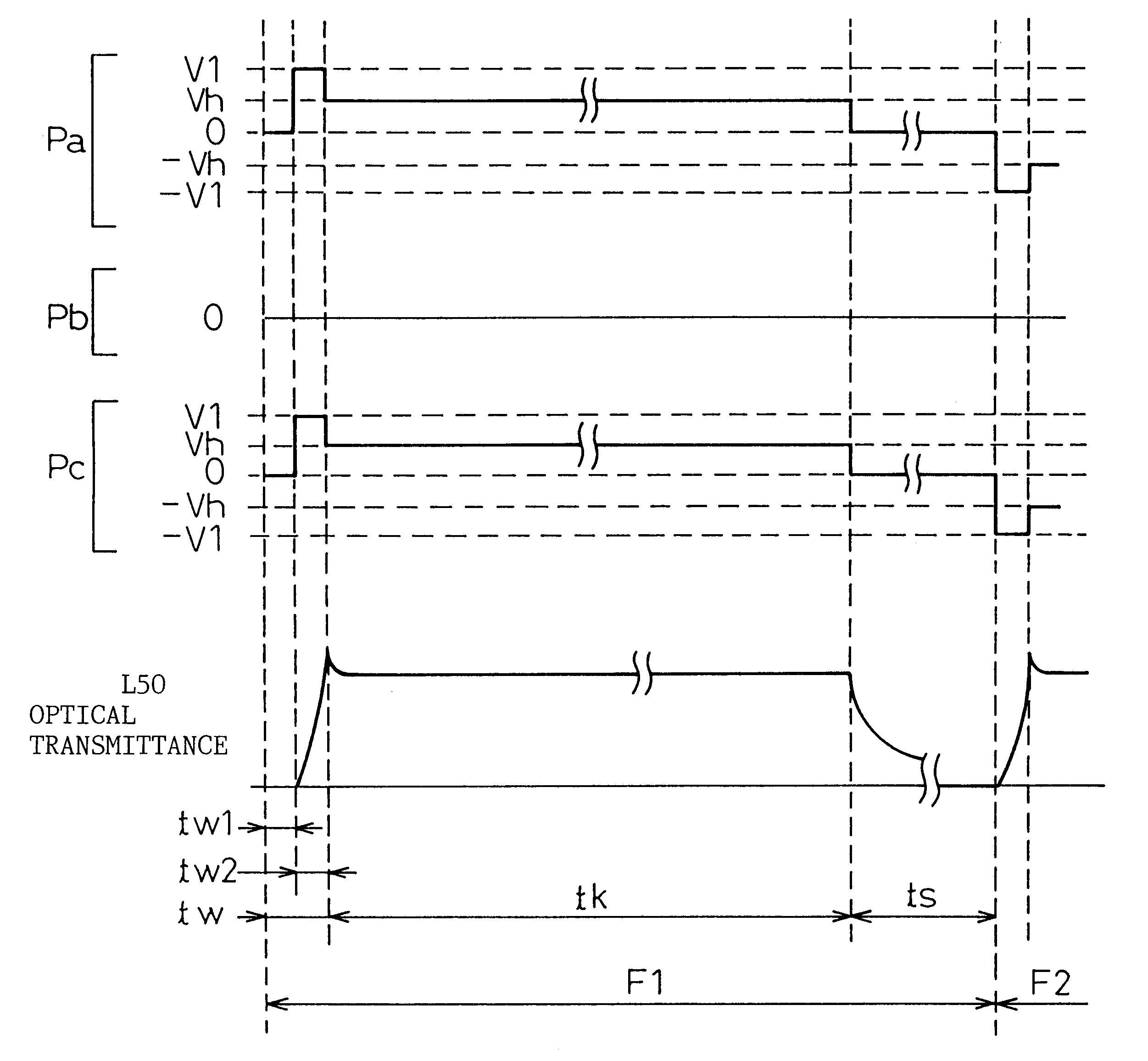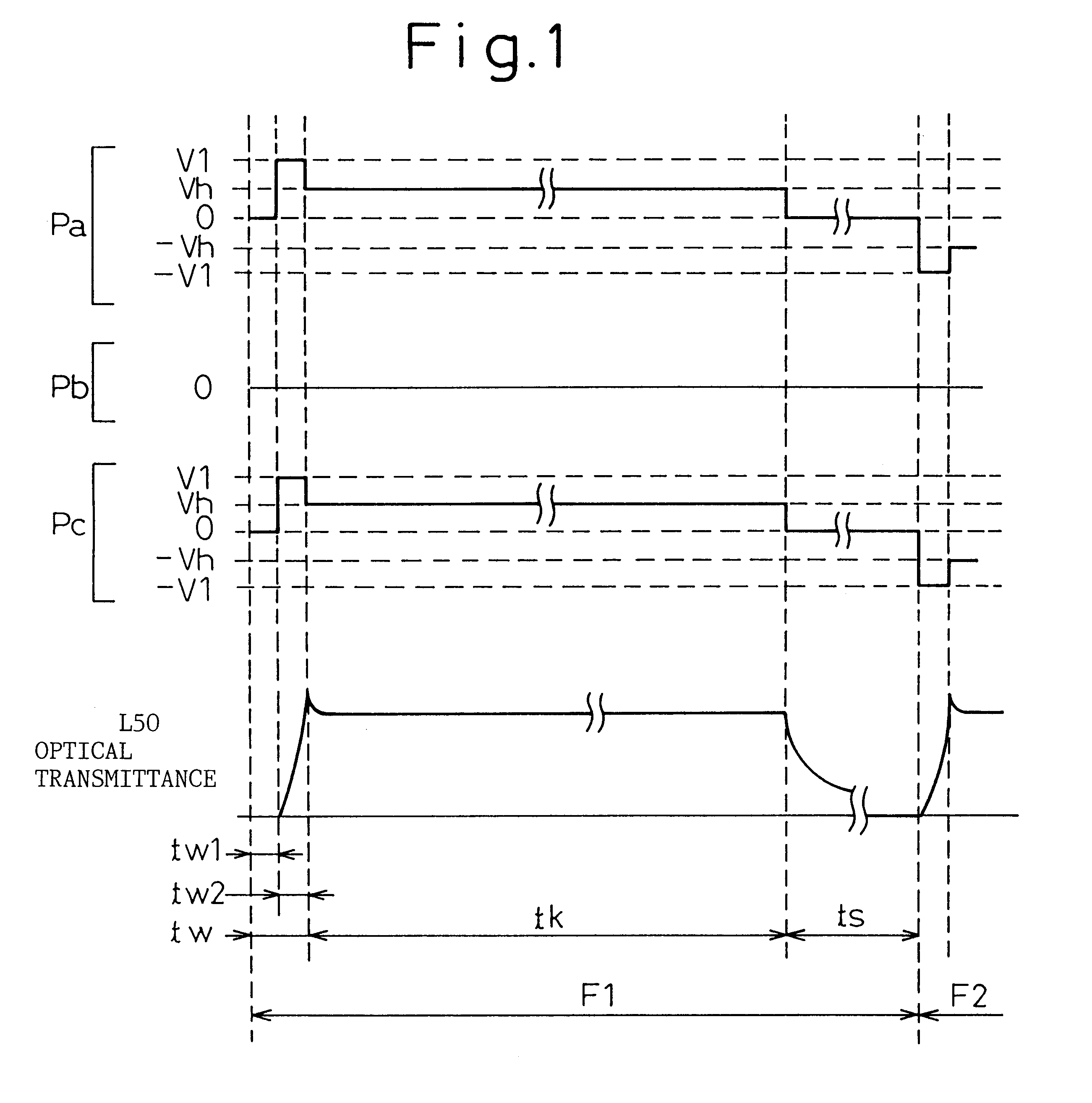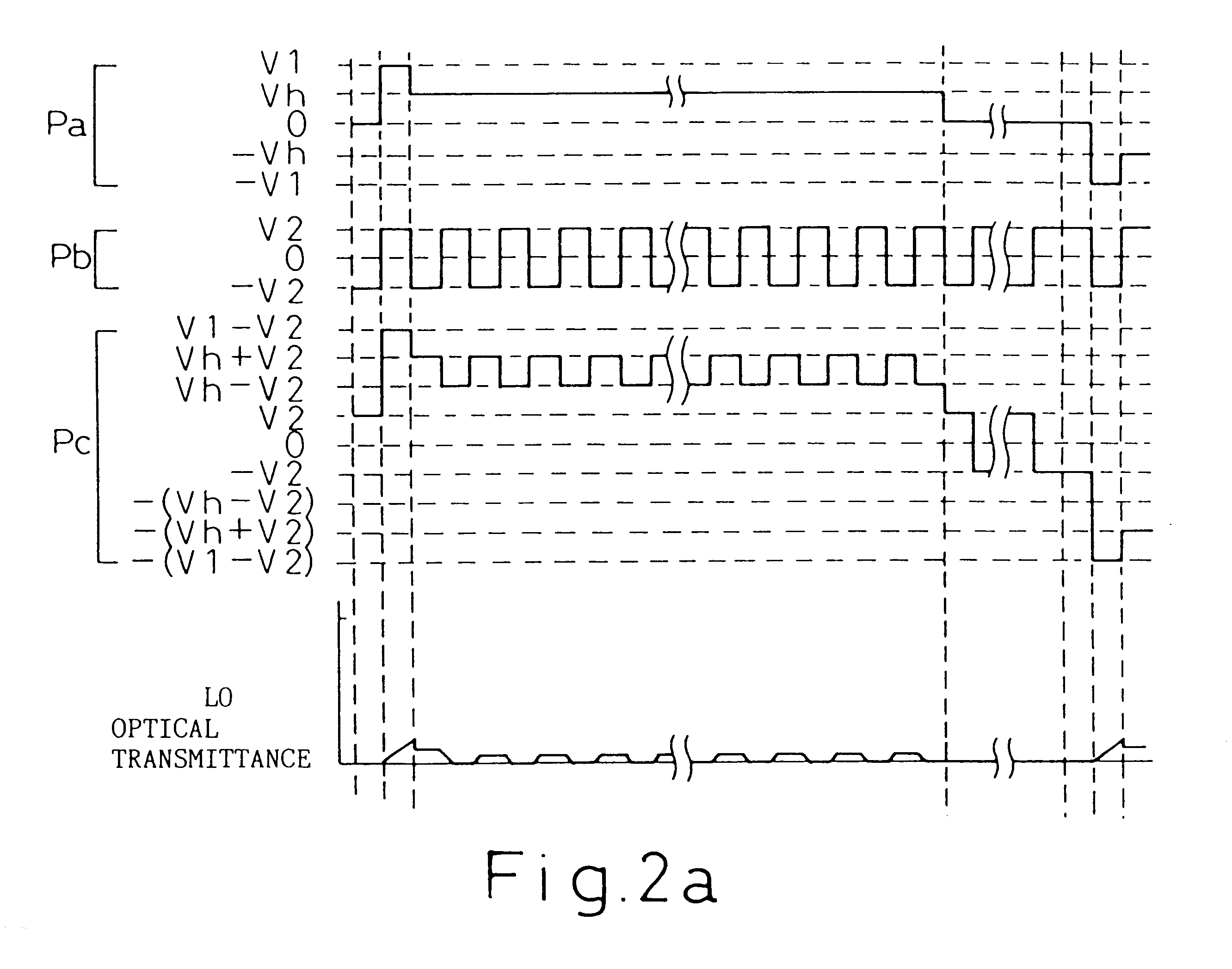Liquid crystal display device
a display device and liquid crystal technology, applied in the direction of instruments, static indicating devices, etc., can solve the problems of deterioration of contrast, response of liquid crystal, extreme deformation of contrast, etc., and achieve the effect of high contrast and linear gray scale display characteristic, facilitating gray shade display control operation
- Summary
- Abstract
- Description
- Claims
- Application Information
AI Technical Summary
Benefits of technology
Problems solved by technology
Method used
Image
Examples
first embodiment
FIG. 1 illustrates the driving waveforms concerning pixels of interest and further illustrates change in the optical transmittance in the case of the present invention. Further, FIG. 1 is a diagram showing the waveform (Pa) of a scanning signal, the waveform (Pb) of a display signal, the waveform (Pc) of a synthesis voltage to be applied to a given pixel of interest, and the optical transmittance L50. Moreover, FIG. 1 illustrates the case that the aforementioned first measure was performed when all pixels on a column electrode, to which the pixel of interest belongs, are in a halftone gray scale state. In this case, this embodiment obtained gray scale levels by performing an amplitude modulation method. Here, when tw1 and tw2 denote a first half and a second half of the selection period tw, respectively, the voltage level, which is represented by each signal in the time periods tw1, tw2, the holding period tk and the relaxation period ts in the first frame, is as listed hereinbelow....
second embodiment
FIG. 2 is a diagram illustrating the driving waveform concerning a pixel of interest and further illustrates change in the optical transmittance in the case of the present invention. FIG. 2(a) illustrates the case that the aforementioned second measure is performed when all pixels on a column electrode, to which the pixel of interest belongs, are in a dark state. In this case, when tw1 and tw2 denote a first half and a second half of the selection period tw, respectively, the voltage level, which is represented by each signal in the time periods tw1, tw2, the holding period tk and the relaxation period ts in the first frame F1, is as listed hereinbelow.
Incidentally, the voltage of the display signal is set in such a manner that .vertline.Vh+V2.vertline.<.vertline.Ft.vertline.. In the case of the liquid crystal panel used in this embodiment, the value Vh is closed to the value At. As a result, the following inequality holds: .vertline.Vh-V2.vertline.<.vertline.At.vertline..
In the cas...
third embodiment
FIG. 3 illustrates the present invention and shows the driving waveform and the optical transmittance in the case of the performing the gray shades display by utilizing the pulse width modulation. Incidentally, it is assumed that all of the pixels other than a pixel of interest on a same column electrode are in the bright state. In the case illustrated by FIG. 3(a), it is assumed that the display signal voltage in the selection period tw of the first frame is (-V2) in (tw1-j) which is a leading part of the period tw1, and V2 in j which is the remaining part of the period tw1, that the display signal voltage is V2 in (tw2-j) which is a leading part of the period tw2, and (-V2) in j which is the remaining part of the period tw2. Namely, in the time period tw2, a time period, in which the voltage (V1+V2) is applied to the liquid crystal, is j which is the time period. Thus, the gray scale is displayed by controlling each of the voltages and changing the length j in such a manner that t...
PUM
 Login to View More
Login to View More Abstract
Description
Claims
Application Information
 Login to View More
Login to View More - R&D
- Intellectual Property
- Life Sciences
- Materials
- Tech Scout
- Unparalleled Data Quality
- Higher Quality Content
- 60% Fewer Hallucinations
Browse by: Latest US Patents, China's latest patents, Technical Efficacy Thesaurus, Application Domain, Technology Topic, Popular Technical Reports.
© 2025 PatSnap. All rights reserved.Legal|Privacy policy|Modern Slavery Act Transparency Statement|Sitemap|About US| Contact US: help@patsnap.com



